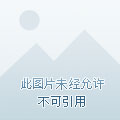
Contents
●Archaeological discoveries and research
3 2018 Archaeological Survey of Neolithic Sites in Chicheng County, Hebei Province... Zhangjiakou Institute of Cultural Relics and Archaeology Chicheng County Museum School of History, Hebei University
12 Briefing on the excavation of song tombs in Sanxing Village, Yangzhou City, Jiangsu Province... Yangzhou Institute of Cultural Relics and Archaeology
20 Briefing on the excavation of Zhujiadi Song Tomb in Xinzhou, Wuhan City, Hubei Province... Wuhan Institute of Cultural Relics and Archaeology Wuhan Xinzhou District Museum
27 Red Mountain Cultural Female Statues from the Perspective of Cultural Staging Re-examination... Li Ao Zhang Xingde
36 Trying to analyze the age of the mural tomb in DongpoZhai, Wei County... Liu Sarina Zhang Xiaodong
40 Research on the characteristics of tomb coupons and coupon platforms excavated in Beijing... Dong Kunyu
●Cultural relics research
51 Western Han Dynasty's analysis of sheep-patterned gold ornaments... Yu Guojiang
58 "Dingzhou Ayajinin Chronicle" Yinkao... Wang Lei Zhao Shaojun
●Historical research
66 From the renaming of "Yanguo" to the origin of the word "Yan"... Wang Yalong
71 Qinhan County's shou title is the year and the fixed year- with Jian Mu, sealing mud, and stele bricks as the inspection center... Wu Fangji
86 Goguryeo Loan Relief Law Sun Weiran
94 The Liaodong vassal states revisit the historical narrative... Jiao Yanchao
102 The land of the founding of the Bohai Sea and the new knowledge of the change of the country name... Feng Enxue Hou Xuan
extend:
In July 2016, due to heavy water erosion, an ancient tomb was found in the bed of the Beisha River in Zhujiadi Bay, Jiumingwan Village, Jiumingwan Village, Old Street, Xinzhou District. A joint archaeological team formed by the Wuhan Institute of Cultural Relics and Archaeology and the Xinzhou District Museum conducted a rescue excavation of the tomb.
The tomb is rectangular in plan and is divided into two chambers, north and south, with a total length of 4.78 and a width of 1.6 meters. The bottom and four walls of the burial chamber are made of more regular stone strips, and the stone slabs cover the top. The bottom of the tomb is paved with eight stone strips, which are 1.6 long, 0.5 to 0.54 wide, and 0.16 meters thick. The east and west walls are tiled with staggered stone strips. The lower part of the south and north walls is paved with stone strips on the side, and the upper stone strips are tiled on two floors. The middle of the burial chamber is divided into two chambers, the north and south chambers, and the upper part of the partition wall is tiled with stone strips. The north room has nine floors of masonry strips from the bottom to the top of the roof, and the south room has a total of ten floors. The stone strips used in the tomb wall are 0.76 to 1.52 long, 0.28 to 0.4 wide, and 0.14 to 0.18 meters thick.
The north chamber is 3.4 meters long, 0.92 wide and 1.1 meters high, and on top of the bottom paved stone, there are two stone coffin pillows next to the east and west tomb walls, 0.3 long, 0.16 wide and 0.18 meters high. The upper part of the burial chamber is topped with five stone slabs, and the horizontal pressure is pressed on the east and west walls. The stone slabs are slightly trimmed and have different specifications, with a length of 1.4 to 1.58, a width of 0.5 to 0.9, and a thickness of 0.16 meters.
The eastern part of the south chamber was damaged by heavy water, and the length of the inner space is unknown, with a width of 0.8 and a height of 1.18 meters. Above the bottom paving stone, there is a stone block close to the west wall, the stone block is straight on one side of the tomb wall, the other side is curved and convex, the bottom and top surface are flat, the stone block is 0.28 long, 0.1 to 0.14 wide, and 0.22 meters high. The upper part of the tomb is covered with stone slabs, and two pieces of the cover plate exist, which are pressed longitudinally on the partition wall of the tomb and the south wall. The stone slabs vary in size, ranging from 1.0 to 1.04 in length, 0.44 in width and 0.16 meters in thickness.
A coffin was found in the north chamber, the specific size of which is unknown due to severe decay. The skeleton of the owner of the tomb has decayed and the burial style is unknown.
There are more than 10 sets of burial utensils such as porcelain, glazed pottery, bronze ware, and iron utensils unearthed from the tomb, including 1 blue and white porcelain bowl, 2 pieces of Aoikou blue and white porcelain dish, 2 pieces of glazed clay pots, 1 piece of phoenix pattern bronze mirror, 1 piece of floral bronze mirror, 1 piece of iron bucket, 1 piece of iron axe, and 1 piece of silver spoon. There are also more than 700 copper coins, including the Sui Dynasty Five Baht, the Tang Dynasty's Kaiyuan Tongbao, Qianyuan Zhongbao, the Five Dynasties and Ten Kingdoms Period Zhou Yuantongbao, Tang Guotongbao, the Northern Song Dynasty's Song Yuantongbao, Taiping Tongbao, Jingde Yuanbao, Xiangfu Tongbao, Tianxi Tongbao, Jingyou Yuanbao, Jiayou Tongbao, Zhiping Tongbao, Xining Zhongbao, Yuanfeng Tongbao, Yuanyou Tongbao, Shaosheng Yuanbao, Yuanfu Tongbao, Sheng song Yuanbao, and so on.